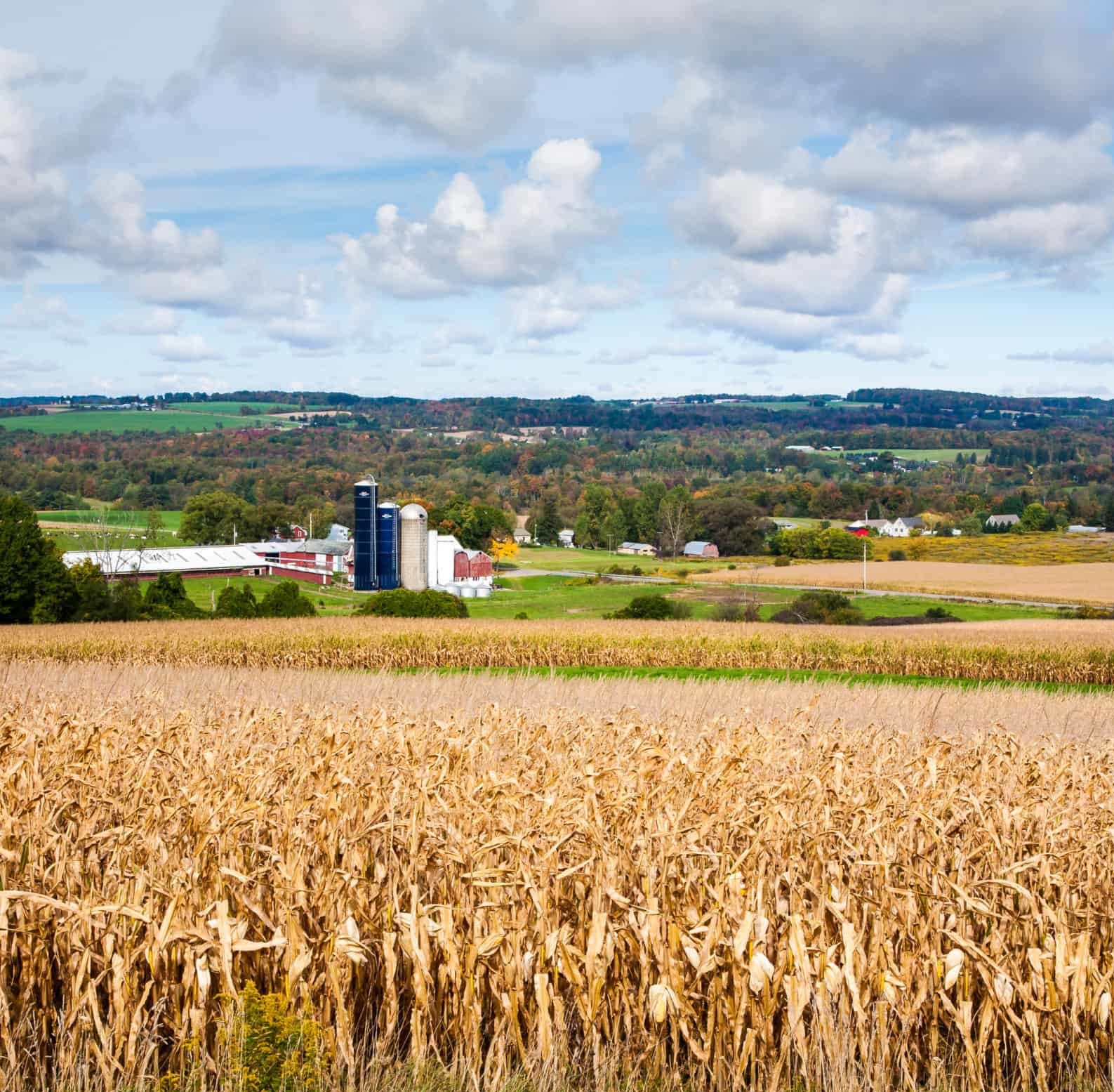
Cornell University Publishes ‘Call for Innovation’ for New York Agrifood System
Analysis highlights strengths and opportunities expressed by dozens of experts; provides a roadmap for state’s agrifood potential
Cornell University released a first-of-its-kind report today designed to guide inventors and investors toward urgent technology needs within New York’s vast farming and food processing industries, as identified by dozens of farmers, manufacturers, retailers, researchers and other key stakeholders. The goal of the report — “Call for Innovation: New York’s Agrifood System” — is to foster regionalization and diversity in these industries by offering evidence-based recommendations and guidance to aspiring entrepreneurs looking for opportunities in the agriculture, processing and distribution spaces.
New York’s agricultural community is one of the most vibrant in the nation, with more than 13,000 farms. It ranks second among overall food production, third in wine production, and is among the U.S. leaders in dairy products like milk, yogurt and cheese, as well as apples, grapes, maple syrup and many other products.
The study and subsequent report are a collaboration between the Center of Excellence for Food and Agriculture at Cornell AgriTech (COE) and Grow-NY, a food and ag innovation program presented by Cornell’s Center for Regional Economic Advancement (CREA). The centers looked to the people that grow, make, move, store and sell food in New York to identify the common constraints experienced across sectors, and found significant recurring themes that represent opportunities for startups and industry leaders alike.
The report dives into the trends that should enable New York farmers and food producers to scale and continue to produce and sell excellent quality food, while reducing costs and environmental impacts and responding to changes in land and labor availability.Robotics, automation, novel crop protection, supply chain and direct marketing advancements are just some of the sought-after solutions that have the potential to help New Yorkgrowers and producers excel further.
“These trends represent problems in search of answers — as well as sectors that have already pulled millions of venture capital dollars into the region — that startups and innovators should notice,” said COE Executive Director Cathy Young. “Agriculture exists in every corner of our state, from Western New York to the tip of Long Island. This is a call to build on our agrifood system, which impacts every resident in some way.”
The study also highlights the impressive economic impact that New York’s food and beverage production businesses have already achieved, as well as recent agriculture success stories, particularly in indoor farming. Controlled environment agriculture companies — especially those pioneering controlled-environment methods like soilless systems (e.g., hydroponics, aeroponics and aquaponics) — helped steer more than $1.4 billion into New York State via venture capitalist funding over the last eight years, much of it in urban centers.
Across the U.S., investors have shown a particular interest in funding solutions for food waste, water quality, climate change mitigation and renewable energy. Other investments are trending toward “midstream” technologies such as food safety and traceability, logistics and transport — all issues that New York farmers, distributors and retailers agreed would improve their operations.
“This report is an appeal to change agents to increase efficiencies, product freshness, food safety and sustainability,” said Young. “We’re looking for difference makers who can empower farmers, improve speed-to-market and strengthen customer relationships. Efficiencies like these will enhance the top and bottom lines of New York’s food producers, distributors and retailers, and further strengthen its position as a major producer of agricultural products.”
This call for innovators isn’t simply meant to fuel New York’s economy; it’s also intended to help solve global demand. According to the United Nations’ Food and Agriculture Organization, the world will need to double its present rate of food production by 2050 to meet population growth estimates. Thus, the U.S. Department of Agriculture (USDA) has set a goal to increase our nation’s agricultural production by 40% by that date, while also cutting its agriculture-based environmental footprint in half.
“Our hope is that this report will inspire entrepreneurs around the globe to develop solutions to the challenges facing our region’s farmers and food producers who are at an inflection point in our industry’s evolution,” said Jenn Smith, program director of Grow-NY, an annual $3 million startup business competition designed to foster growth across Upstate New York’s food, beverage and agriculture ecosystem.
“The stakes couldn’t be higher for many of these farmers and producers,” added Smith, who will share some of the report’s highlights during an April 13 virtual press briefing. “Their survival depends on their ability to shift – or even shatter – longstanding paradigms in areas such as labor, land use and logistics.”
For Young, a longtime state senator who was born in and represented relatively rural parts of the state, she’s especially excited about ideas that tackle climate change, support rural economies and increase the diversity and equity in farming and food production across New York. Of course, no challenge has been greater than the recent pandemic, she said, which showed the pressing need for this study.
“The pandemic was part of the impetus for this report, as issues in distribution, transportation and production caused havoc for many businesses, producers and families,” Young explained. “We never imagined that we would see breaks in our food system, but there were serious issues that arose during the pandemic, and it really drove home the importance of a strong agrifood system.”
Still, Young is excited about the future of New York’s agrifood industry, and the study’s findings underscore that confidence.
“After every recession, you see innovations that are created as a result. As they grow, more jobs and niches are created,” she said. “That innovation will strengthen our systems, matching people through solutions and technologies. We’ll see more people working collaboratively, bringing bigger groups together such as government, academia and advocacy clusters to create new and inspiring solutions.”
Most importantly, the project’s sponsors don’t want this report to sit on a shelf and gather dust.
“We want this to be a roadmap to help businesses venture into New York, and we want to keep sketching out new routes, helping technology push boundaries and reach where it is needed,” Smith added. “Tackle one issue, take the next; seize one opportunity, stretch for another. We’re viewing this report as the first step, a resource that will be supplemented with new research and reflective of an evolving ecosystem, positioning New York as the place to grow your game-changing agrifood solutions.”
The full report can be viewed here. To hear about some of its highlights and key opportunities, please join us at 9 a.m. (EDT) for a virtual press briefing.


